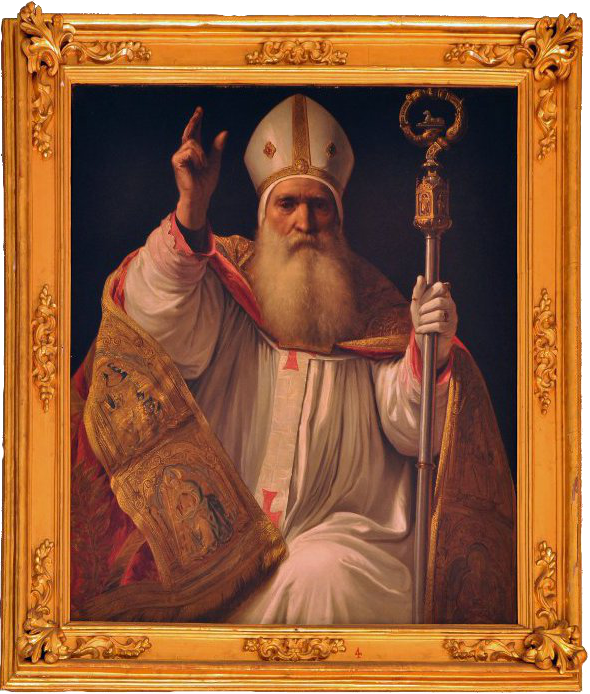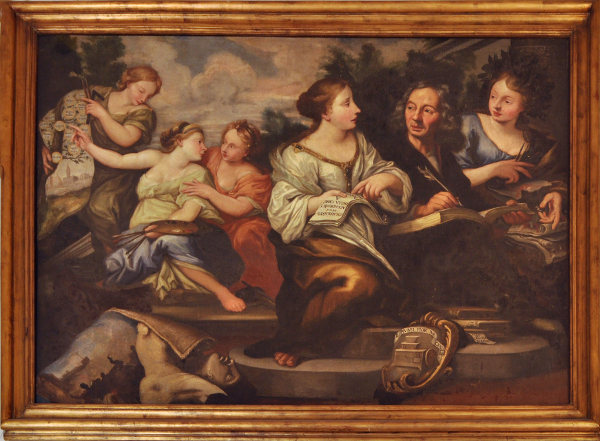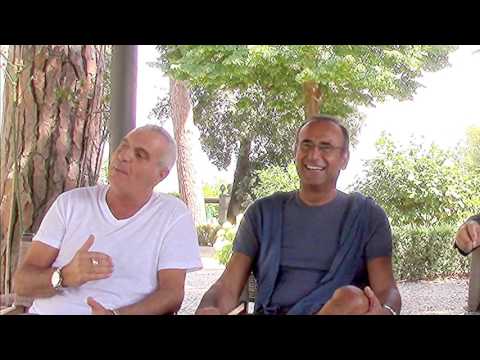The paintings

The picture, commissioned by the Accademia della Crusca, represents St. Zanobi, its patron. On 3 August 1650, the Academicians of the Crusca, assembled in a General Meeting to reform their statute, decided to appoint themselves an “advocate” (patron), and they chose Saint Zanobi, archbishop of Florence (+ 417). On 20 October of the same year, the Saint’s holy day was solemnly celebrated at the Accademia, and the ceremony was repeated every year until 1764 (the year of the last minutes taken for the academic sessions of the 18th Century).

This allegoric painting portrays Filippo Baldinucci, known in the Accademia as ”il Lustrato” (“the polished”), accompanied by figures representing the Accademia della Crusca, and the Arts (Architecture, Painting and Sculpture) in the draft of his Vocabolario toscano dell’arte del disegno (’Tuscan Dictionary of the Art of Drawing’) (Florence, 1681). The pleasing composition, set in the open air in a landscape lined with trees, is set out as follows: the central feminine figure, representing the Accademia della Crusca, points to a sheet of paper with Vocabolario degli Accademici della Crusca (“Dictionary of the Academicians of the Crusca”) written on it. On the right side of Baldinucci, shown carrying his half-ready dictionary in his hands, stands another feminine figure, the Accademia del Disegno (“Academy of Drawing”). On the left the three Arts are depicted, each pointing in turn to a piece of parchment with the drawing of the genealogical tree of the Florentine artists, above a landscape of Florence. Under the two representations of Painting and Sculpture are, respectively, the drawing of a battle scene and a mutilated sculpture. In the lower right corner is the emblem of the Accademia della Crusca with the frullone and the motto: "Il più bel fior ne coglie" (“She picks the fairest flower”).
Notices by Crusca
-
Speaker's corner
La competenza linguistica dei giovani italiani: cosa c'è al di là dei numeri?, by Rosario Coluccia.
Activities
-
The Piazza aims at the preservation and at carrying out activities for the promotion of multilingualism in the European Union; 2007-ongoing.
-
Digital integrated archive of didactic materials, iconographic and multimedia texts and documentation for the divulgation of Italian linguistic and historical-cultural heritage, with special regard to the second and third generation Italians abroad; project FIRB; 2009-2013.
-
Creation of Il Vocabolario del fiorentino contemporaneo (Dictionary of Contemporary Florentine Language): project financed by Regione Toscana and Comune di Firenze (first three-year period) and by Federico del Vecchio Bank - Banca Etruria group (second three-year period); 1994-1996/2011-2013.





